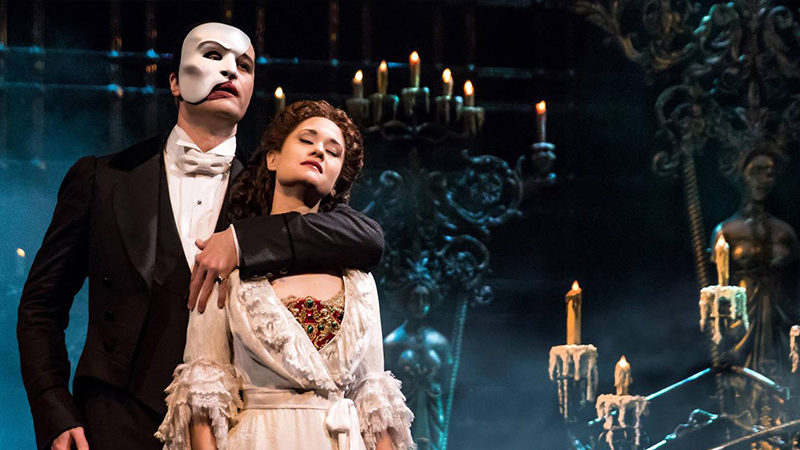
I absolutely love musicals, and I’m not even gay. Go figure!
Modern musicals are closely related to earlier forms of musical theater. Opera is a play where the whole story is sung, both dialog (recitative) and the songs themselves (aria). Operettas are operas where the recitative is spoken, not sung, but the arias still remain. The modern musical is a contemporary form of operetta, with an added emphasis on dance and contemporary style of music.
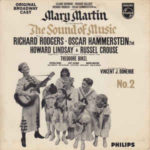 My love for musicals began in my childhood. My parents bought the original cast recordings for The Sound of Music, My Fair Lady, and Jamaica, a lesser know musical starring Ricardo Montalban and Lena Horne. I listened to them endlessly and became familiar with all their songs.
My love for musicals began in my childhood. My parents bought the original cast recordings for The Sound of Music, My Fair Lady, and Jamaica, a lesser know musical starring Ricardo Montalban and Lena Horne. I listened to them endlessly and became familiar with all their songs.
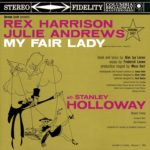 One thing that virtually all musicals have is the opening song that establishes the setting. This is different from the overture, which is usually a medley of themes from the songs in the musical that’s played while latecomers to the theater get seated. A scene with spoken dialog may come before the opening song, or the song itself may begin the show.
One thing that virtually all musicals have is the opening song that establishes the setting. This is different from the overture, which is usually a medley of themes from the songs in the musical that’s played while latecomers to the theater get seated. A scene with spoken dialog may come before the opening song, or the song itself may begin the show.
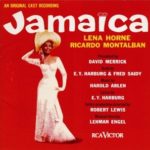 This is what I’m in the mood to explore today, since beginnings are so important to stories. In the words of Maria from The Sound of Music, “Let’s start at the very beginning, a very good place to start.” So here are the opening songs to my favorite musicals.
This is what I’m in the mood to explore today, since beginnings are so important to stories. In the words of Maria from The Sound of Music, “Let’s start at the very beginning, a very good place to start.” So here are the opening songs to my favorite musicals.
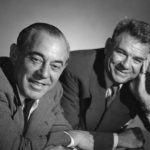 The very first true musical was Show Boat, music by Jerome Kern and lyrics by the king of lyrics, Oscar Hammerstein II. Hammerstein went on to pair up with Richard Rodgers, forming one of the greatest musical teams ever. Their first project was Olahoma! The story itself is a fluff piece with a pinch of serious drama. But the songs already reveal the mega-talent that constitutes the Rodgers/Hammerstein team.
The very first true musical was Show Boat, music by Jerome Kern and lyrics by the king of lyrics, Oscar Hammerstein II. Hammerstein went on to pair up with Richard Rodgers, forming one of the greatest musical teams ever. Their first project was Olahoma! The story itself is a fluff piece with a pinch of serious drama. But the songs already reveal the mega-talent that constitutes the Rodgers/Hammerstein team.
Beautiful days in the wide-open spaces of the Oklahoma territory is what the opening song establishes, as Curly rides his horse through a field of corn “as high as a elephant’s eye.” (That’s not a typo in the quote.) The scene was filmed on location, not on a sound stage. Those are real Oklahoma fields and skies and clouds—except they were filmed in Arizona, not Oklahoma, because in Oklahoma, it was too hard to find a location that didn’t have oil wells in the background.
Rogers and Hammerstein went on to produce Carousel, a much darker story, South Pacific, a romance set in, well, the South Pacific, with an added World War II subplot. Then they came along with the smash hit The Sound of Music, also known as Julie Andrews’ revenge for My Fair Lady in MAD Magazine‘s satire of the film (sung to the tune of the last two lines of “Climb Every Mountain”):
When it tops “Fair Lady”
Vengeance will be mine
Maria the wanna-be nun sets the stage for this story, loosely based on the true experiences of the von Trapp family. This title song is performed in the Austrian Alps, emphasizing the story’s theme of music and its spiritually healing properties. The movie adaptation also throws in what’s probably the most dizzying opener for any musical. It also cuts out the introductory portion of the song.
Rodgers and Hammerstein also penned a frivolous, fun little thing called Cinderella that was produced for television in 1957, also starring Julie Andrews, then again in 1965, starring Leslie Ann Warren in her breakout role.
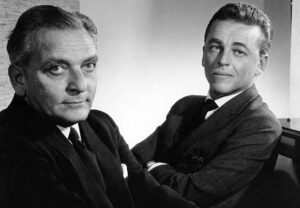 Speaking of Julie Andrews’ revenge, another prominent musical team was Lerner and Loewe, who took a play by George Bernard Shaw full of biting satire called Pygmalion and turned it into My Fair Lady. The irascible Professor Henry Higgins, played to perfection by Rex Harrison in London, on Broadway, and in the film, attempts to gentrify a flower girl from the streets by changing her speech patterns.
Speaking of Julie Andrews’ revenge, another prominent musical team was Lerner and Loewe, who took a play by George Bernard Shaw full of biting satire called Pygmalion and turned it into My Fair Lady. The irascible Professor Henry Higgins, played to perfection by Rex Harrison in London, on Broadway, and in the film, attempts to gentrify a flower girl from the streets by changing her speech patterns.
This song introduces the theme of the story, which is how one’s speech “absolutely classifies” a man. It introduces the philosophy behind his efforts to transform Eliza Doolittle into a lady by teaching her proper English. They dance in celebration while the plain in Spain is drenched in rainfall when, by George, she finally gets it.
Another satirical work by Lerner and Loewe takes us all the way from London, England, to Gold Rush days in California to tell the story of the antics of prospectors in a boom town.
The story in the original theatrical verson of Paint Your Wagon is very different from the story in the film version. Originally the boom town is called Rumsen City after the main character. In the film it’s No Name City. In the original, Ben Rumsen has a sixteen-year-old daughter named Jennifer, and Pardner’s fantasy girlfriend Elisa in the film is the daughter’s mother who left them. Pardner is a Mexican in the original named Julio Valveras, and the love triangle is between Ben and a character named Edgar Crocker.
But the polygamous Mormon who sells his wife to Ben is in the original, and so is the opening song, sung by a chorus instead of a character. The film version treats it more as an overture rather than a part of the story as the stage version does. It expresses the free-wheeling spirit of the prospectors who follow the wandering star they were born under and never look back.
Somewhere around the time I was still checking out hot chicks in high school, the most modern form of music, rock and roll, decided to go full circle and return to the days of opera. Tim Rice and Andrew Lloyd Webber produced a fun little piece originally designed for schoolkids to perform called Joseph and the Amazing Technicolor Dreamcoat. It was so popular, they expanded upon it, and now I swear there’s not a single day goes by where it isn’t produced on the stage somewhere in the universe.
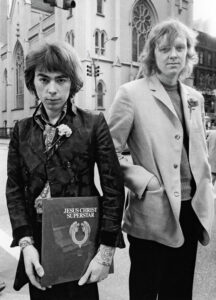 Then they rocked the world with an ambitious project in the genre of “rock opera” that began with S.F. Sorrow by The Pretty Things and was popularized by The Who’s Tommy, the production that was first billed as a rock opera. Rice and Webber elevated that concept to a higher level with Jesus Christ Superstar. In Joseph, they took the modern perspective of a boy striving to “become a star” in Biblical Egypt. They continued that perspective with another iconic religious story: the last week of the life of Jesus.
Then they rocked the world with an ambitious project in the genre of “rock opera” that began with S.F. Sorrow by The Pretty Things and was popularized by The Who’s Tommy, the production that was first billed as a rock opera. Rice and Webber elevated that concept to a higher level with Jesus Christ Superstar. In Joseph, they took the modern perspective of a boy striving to “become a star” in Biblical Egypt. They continued that perspective with another iconic religious story: the last week of the life of Jesus.
The opening song is sung by Judas Iscariot, who lays out the premise for the story. Jesus began as a preacher of morality, but somehow his legend grew to where he’s called the Son of God. Judas laments this development and fears what it portends for the fate of all of them. Indeed, his fears are realized in the end.
Not exactly a warm, fuzzy theme for believing Christians, but it’s the perspective of the creators, and I saw Webber once state in an interview he didn’t understand why people were offended. They weren’t trying to belittle Jesus. They were just asking questions. “Jesus Christ, Jesus Christ, who are you? What have you sacrificed?” I’m not overly fond of the theme either, but the music is fantastic, so I love listening to it.
And in the end, you have to remember, the message is presented from the point of view of Judas Iscariot, so what do you expect?
Andrew Lloyd Webber wrote Evita and Cats next, both very ho-hum as far as I’m concerned, and both only producing one decent song each, “Don’t Cry for Me, Argentina” and “Memories.” But he reached his pinnacle, his masterpiece, with Phantom of the Opera, a powerhouse of a musical and as epic as classical opera ever was.
Oddly it has no opening song. Instead it begins with a prolog of an auction of items from the now defunct opera house, then suddenly flashes back in an explosive sequence to the days when the opera house was functioning and haunted by the phantom. In place of the opening song, there’s an opening instrumental piece based on the titular song “The Phantom of the Opera” that appears later in the play and expresses the theme of the story.
From a pseudo-classical musical set in France of a century or two ago, we go to modern times and a spoof horror science fiction story set to music and located in skid row, based on a cheesy movie from Roger Corman, king of B-movies. It was filmed in a day and a half with a budget of $30,000, and it shows. But it did introduce Jack Nicholson to us as the neurotic dental patient.
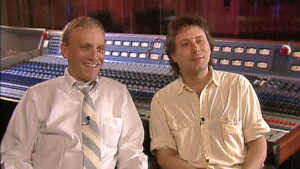 The musical adapted from the movie was penned by the wonderful team of Alan Menken and Howard Ashman who gave us The Little Mermaid and Beauty and the Beast. They elevated the story to a much greater level of quality with some fantastic music reflecting the doo-wop era of the setting, complete with a “Greek chorus” consisting of Crystal, Ronette, and Chiffon commenting on the story every now and then.
The musical adapted from the movie was penned by the wonderful team of Alan Menken and Howard Ashman who gave us The Little Mermaid and Beauty and the Beast. They elevated the story to a much greater level of quality with some fantastic music reflecting the doo-wop era of the setting, complete with a “Greek chorus” consisting of Crystal, Ronette, and Chiffon commenting on the story every now and then.
This is the opening song to Little Shop of Horrors (after the overture-esque titular song) that begins the story and paints the setting where we’ll live for the rest of the musical: skid row. Its form is pure classic musical with the many elements that come together as exposition for the setting.
The musical’s ending is a real downer where the main characters all die and Audrey II conquers the world. It played so bad with test audiences for the film that there was no way it would be released, so they filmed a new, more upbeat, but still slightly ambiguous ending.
Another musical whose opening song does the same thing as “Skid Row” is Disney’s Beauty and the Beast. Now pretty much every Disney animated feature is a musical, but this represents the pinnacle of Disney alongside The Little Mermaid and The Lion King, and this opener feels the most like a Broadway musical. It introduces us to the main character Belle and the antagonist Gaston and lets us get to know them and what motivates them.
I must confess, the next musical is not one of my favorites. I don’t particularly like the story, but the music is quite well done and reflects the early rock and roll era that is its setting. The story in Grease may be meh to me, but the opening song (again, after the titular song that acts like an overture) has a Broadway feel and is virtual perfection for how to start a musical.
Now we come to my favorite musical of all, based on my favorite story of all. I’ve read Victor Hugo’s Les Miserables twice—the unabridged version, mind you, of over a thousand pages—because I love it so much. I’ve seen the musical in the theater three times. I’ve seen the movie exactly once, because I hate it. What an abomination! Especially—you guessed it—Russel Crowe. May Tom Hooper rot in hell.
I don’t know how many times I’ve watched the 10th anniversary concert with the “Dream Cast.” It’s a dream cast indeed, and my preferred rendition of the music, so it’s the performance I share here. Les Mis is a full-fledged opera, but with contemporary music, not classical. It launches right in to the opening song without a hint of an overture, bringing us into the prison where Jean Valjean is about to be released. It gives us a flavor of the harsh times for the poor, the wretched—i.e., les miserables—in 19th century France, the theme of Hugo’s massive novel.
I cannot ignore one of the more recent sensations that swept the Tony Awards based on the religion of my heritage, even though I haven’t see it yet. But I do love the songs, which I have on my iTunes, and I have a passing familiarity with the story.
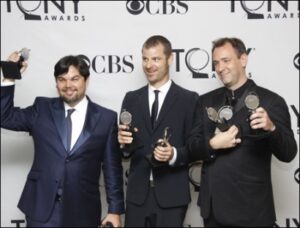 Created by the unlikely duo of Trey Parker and Matt Stone, the South Park guys, along with the assistance of Robert Lopez of Avenue Q fame, an adult spoof of Sesame Street, and who was involved with Disney’s Frozen, the musical is the story of two Mormon missionaries assigned to a caricature version of Uganda in Africa.
Created by the unlikely duo of Trey Parker and Matt Stone, the South Park guys, along with the assistance of Robert Lopez of Avenue Q fame, an adult spoof of Sesame Street, and who was involved with Disney’s Frozen, the musical is the story of two Mormon missionaries assigned to a caricature version of Uganda in Africa.
The opening song introduces the concept of Mormon missionaries and what they do and establishes the centerpiece, the McGuffin if you will, of the story: The Book of Mormon. It also establishes the atmosphere of the show, namely a satire on Broadway musicals played straight in an authentic Broadway style. This is the performance of the song at the Tony Awards, where it acts as the opening song for the program.
I’ll finish off with another Mormon-themed musical which is also one of my favorites because I wrote it. This is the opening song to my own opera, or more accurately operatic musical, which is the official genre name for the likes of Joseph, Phanton, and Les Mis, because most or all of it is sung rather than spoken, and because the music is contemporary, not classical like real opera.
General Prophet Joseph Smith is the story of the final days of the Mormon prophet Joseph Smith, but its prolog briefly covers the beginning of his religious career. The song establishes the legendary event that began it all. This performance of the song is from the concept album I produced, and the images are put in to have something to look at, representing people who are excited about attending a gospel revival meeting.